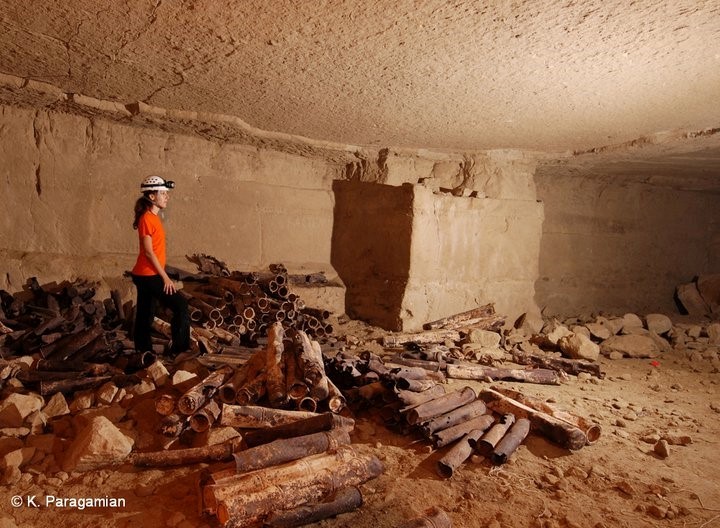Cave Labyrinth is located 50km south of Iraklion, on a small hill, 3.5 km north of Kastelli village in Messara Plain. It was a huge artificial cave with labyrinthine corridors longer than 2.5km long and several rooms that did not lead anywhere, which served as a quarry for the extraction of stones used for construction of the Minoan palace at Phaestus, the Royal villa of Agia Triada, the Roman city of Gortys, and other smaller towns. The quarry and its two entrances were almost completely destroyed by the Germans in 1944 and thus today we cannot see its original form.
The cave of the labyrinthine tunnels and the dead ends has raised the interest of many researchers, who place the mythical Labyrinth of the Minotaur in that cave, and not at Knossos. According to the famous legend, Theseus killed the monstrous Minotaur through the dark maze with the help of Ariadne, who gave him a string to avoid getting lost and find the exit again. Thus, Theseus managed to kill Minotaur and set him and his Athenian partners free; Athens was obliged to send 7 young men to Knossos every nine years, in retaliation for the death of King Minos son, Androgeos, by the Athenians when moving to Thebes for taking part in sport games. Many believe that the myth of the Minotaur symbolizes the suffering and the poor conditions under which slaves worked in the quarry, most of them dying in this dark and damp prison.
After the mine ceased to operate, its galleries were filled with bats. Thus, the local residents for centuries came there to load their animals with the nitrate residues of bats, which are an ideal fertilizer.
 Also, the story of Theseus and the Minotaur made the cave known worldwide, being the most important attraction on the island for centuries. Thus, many travelers and explorers began to visit it and became one of the most important tourist attractions of Crete during the Middle Ages. Indeed, on the walls there are innumerable inscriptions with names from the 15th century, the multitude of which betray the importance of this monument.
Also, the story of Theseus and the Minotaur made the cave known worldwide, being the most important attraction on the island for centuries. Thus, many travelers and explorers began to visit it and became one of the most important tourist attractions of Crete during the Middle Ages. Indeed, on the walls there are innumerable inscriptions with names from the 15th century, the multitude of which betray the importance of this monument.
Much later, when the Germans occupied Crete, the cave was used as a huge warehouse for ammunition, food and water. Indeed, it became the largest ammunition depot for Germany, which could supply the entire Middle East, with more than 300,000 tons of weaponry! Before the Germans left the island in 1944, they blew up all their ammunition, so the cave was completely destroyed and its entrances were buried under giant rocks. This explosion was so strong that several 15-ton boulders were found within a 10km distance.
In 1945 the Greek state started works for restoring the cave and clear whatever ammunition had not exploded due to lack of oxygen. The entrances were reopened for a while and, unfortunately, then many locals lost their lives while trying to find ammunition, which was used for making fertilizers or for fishing with dynamite. Today the cave is sealed and entering is strictly forbidden, however many cases of illegal excavations have been reported. Travelers today can get a taste of what Labyrinth was like by visiting the smaller adjacent Labyrinthaki Cave.
What is near me?
Additional Info
- Location: Heraklion Prefecture
- Type: With archaeological importance










 Labyrinth Cave
Labyrinth Cave 








































































